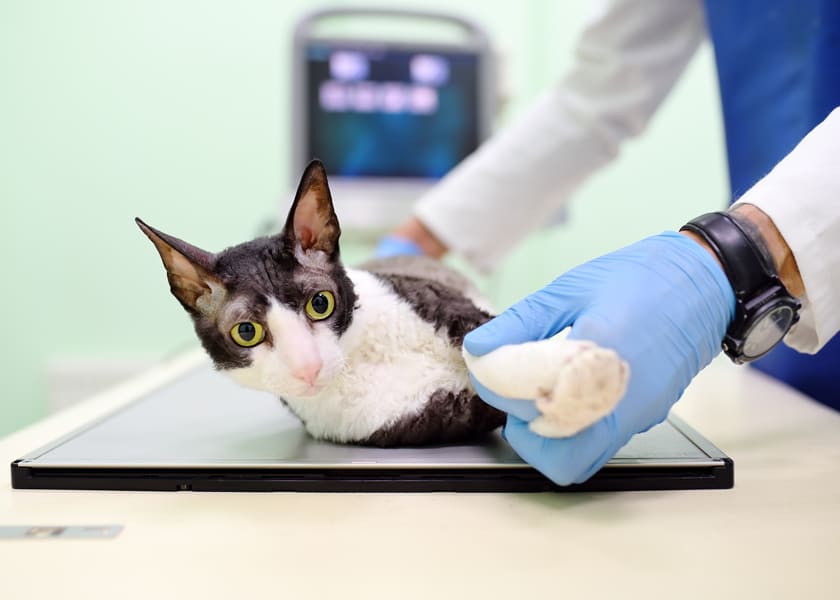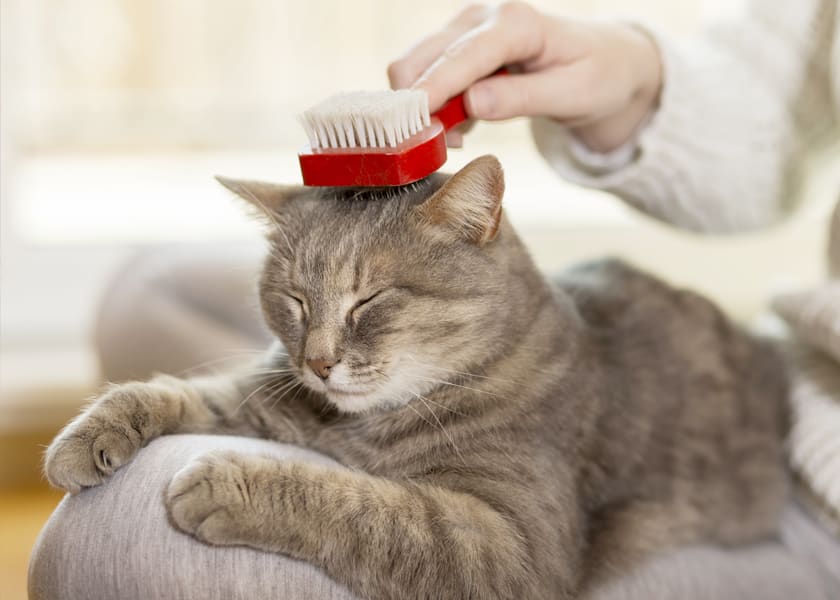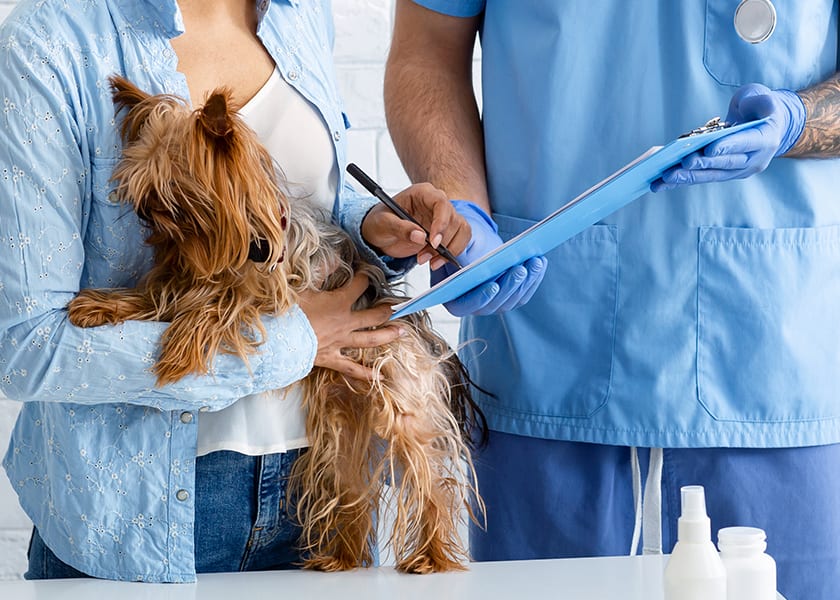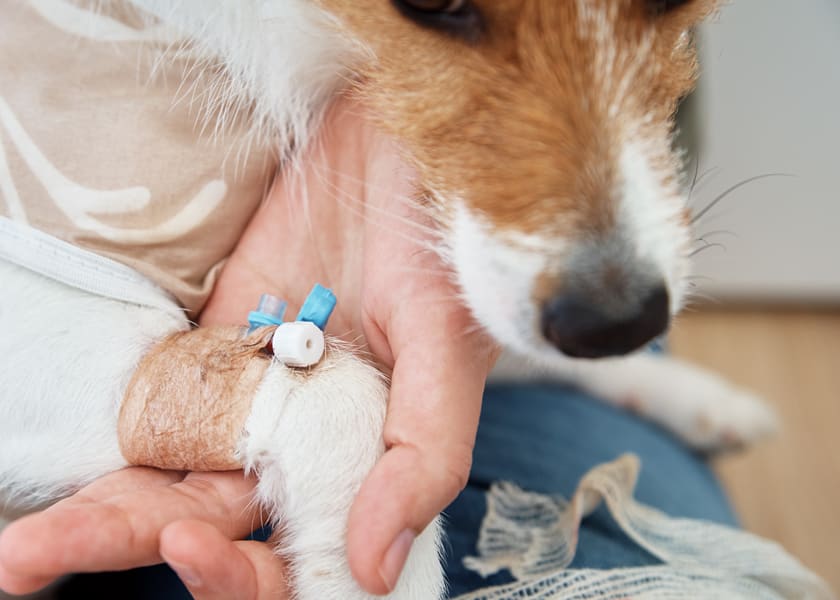Best Pet Insurance
Pets Best 
Personalized Plans for Your Cat or Dog
- 90% Coverage Available
- Fast & Effective claims
- Zero Lifetime Limits
- Zero Annual Limits
Pet Insurance: Financial Protection For Your Best Friend
An unexpected illness or injury can easily put a pet owner in a position where they have to make choices that will greatly affect their budget and quality of life going forward. Pet insurance gives you that extra peace of mind knowing that should your pet be diagnosed with a serious illness or sustain a major injury medical expenses will not bankrupt you financially.
The biggest question most people ask about pet insurance is this: Does it really work?
The answer is "yes." It does. However, you must understand that pet insurance is not like human health insurance where you are covered for all expenses (with some exceptions) if they apply to your policy. Pet insurance works more like an insurance deductible you would have with your own auto or homeowner's policy.
You see, most people think of pet insurance as being a safety net in the event their pet becomes seriously ill or injured. Some companies even bill it this way in their advertisements and claims process. The reality is that pet insurance operates under very similar guidelines that almost every form of medical reimbursement operates under today: You are responsible for 100% of the charges up to the point the pet is eligible for benefits on your policy. Then, the insurance company pays a percentage of the costs.
It is important to note that your maximum reimbursement limit is not necessarily equal to the actual amount you will pay for your pet's care. Rather, it is likely more than you would normally receive in reimbursements because most companies set their reimbursement rates based on the average cost of care in your region.
For example, if the average cost of veterinary care in your area is $1,000 and you have a $500 deductible, with most pet insurance policies you are likely only be reimbursed 50% or less of eligible charges up to that point. So realistically, if your dog or cat requires surgery or hospitalization beyond the first few days, you will still end up with an expense at least equal to the deductible.
Of course, there are companies out there that manipulate this model to suit their own purposes. In general, if you have a pet insurance policy with a company that has been around for many years and is financially stable, then your premiums will be among the lowest in the industry. Most reputable pet insurance companies promote their plans this way: "We pay what we say, when we say."
It is important to consider all factors associated with a given pet insurance plan before purchasing. For example, some companies will reimburse 100% of veterinarian costs while others reimburse only 80%. Some companies provide unlimited lifetime coverage while others cover up to certain age limits only. The list goes on and on…
In fact, when shopping for an individual policy, there are nearly as many variables to consider as there were when shopping for your own auto or home insurance. You'll need to determine if you want reimbursement based on a percentage of the actual charges (the most common method) or by reimbursement of a flat rate benefit (for example, $500 toward any and all veterinarian costs).
Also consider whether you want 100% coverage for routine care such as annual exams and vaccinations, 80% coverage for injury and illness, 50% co-insurance, or even 20%. Finally, think about how much veterinary care your pet is likely to require in her lifetime and add that number to the deductible.
The point behind considering these factors is so you can purchase a policy at a price that will be affordable when it's time to use it. In other words, you don't want to over-insure your pet by buying a policy that is too expensive for when they require veterinary care.
We all love our pets so much that we sometimes take them everywhere we go. They are always excited to see us when they greet us at home after work, they go on holiday with us, and they even follow us into the bathroom every morning! The sad truth is that accidents happen, whether caused by ourselves or another party and can lead to very serious injuries for our beloved four-legged family members.
Up to 40% of all pet insurance claims are for accidents and injuries, and veterinary costs average $1,500 per claim. Symptoms that may require costly treatment include limping, vocalizing (crying/howling), loss of appetite, swelling, and bleeding. Other signs such as coughing or vomiting with no obvious cause may be an indication of a serious underlying condition such as heart disease or cancer.
The most common types of accidents taking place today are those involving cars, window sills, and falls from heights. It is important to note that injuries resulting from the negligence of another party can only be reimbursed if you have purchased "accident" coverage – not all insurers cover this type of injury.
Depending on your pet insurance plan, reimbursement could be anywhere from full to partial and may include different benefits such as:
- A. Vet fees and other related expenses for treatment of the injury or illness;
- B. Any medications, supplies, or equipment associated with the treatment;
- C. Out-of-pocket expenses that you have paid due to your pet's injury (deductibles); and/or
- D. A lifetime limit on amount payable per covered incident (caps).
This type of coverage is probably not something you want to skimp on if your pet requires frequent medical care – some companies offer unlimited lifetime coverage whereas others cap payout amounts at a certain amount per claim. If you are considering purchasing a policy that has a deductible, it may be a good idea to consult your veterinarian before committing to one company.
Many companies offer accident coverage as an add-on to their base medical plan but it is important to remember that they do not cover pre-existing conditions. If your pet happens to injure himself prior to purchasing the insurance, he will need treatment anyway and you would be paying for this expense out of pocket.
For more information on how to get started with choosing a plan, I have listed some steps below that may be useful in your decision-making process:
1. Ensure that your pet is eligible before applying for coverage – many companies will not provide coverage if your pet has "pre-existing" conditions prior to purchasing the policy.
2. Decide which benefits are most important to you and conduct research into each company's list of exclusions (benefits they do not cover) and limitations (maximum payout amounts). If you decide on an insurance company but it does not meet all of your criteria, consider asking them if they can make any adjustments to your coverage.
3. Shop around! Rates vary by company and even by the breed of animal (larger dogs typically cost more). Ask about discounts that may be offered for purchasing multiple policies, enrolling in automatic payment plans or obtaining additional services such as identification tags (microchipping).
4. Read the fine print – most companies require that you submit all applications within a certain time frame so it is best to do this when you are not rushed or desperate for help with an emergency situation. Also, pay attention to how often reimbursement checks are issued and whether there is a limit on the number of times your pet can receive treatment within a year's timeframe.
Some companies will only reimburse you once per condition and some will cover the same condition as many times as it arises, within a specific timeframe (e.g., for orthopedic conditions like hip dysplasia). Also, check to see how long you have to notify them if your pet is diagnosed with an illness; some companies may require notification within 48 hours of diagnosis, and others may grant up to 30 days.
5. Read all of the company's literature on their website about their insurance plans – this way you will know what they offer and hopefully not be surprised by "fine print" exclusions later on. Many companies offer online quotes so that you can compare prices and coverage options before committing. I hope this article has inspired you to research your options and an informed decision on whether pet insurance is the right fit for your budget!
Conclusion
Owning a pet is a huge responsibility and, like any other type of insurance, pet insurance can help to alleviate some of the financial stress that comes with owning a four-legged friend. When choosing a policy, it is important to consider the company's list of exclusions (benefits they do not cover) and limitations (maximum payout amounts).
It is also important to remember that many companies require you to submit all applications within a certain time frame so be sure to do your research before making a commitment. Finally, read the fine print! Most policies have clauses that allow for reimbursement only once per condition or for treatment of the same condition up to a certain amount. By taking these steps, you are more likely to find coverage that meets your needs.

















